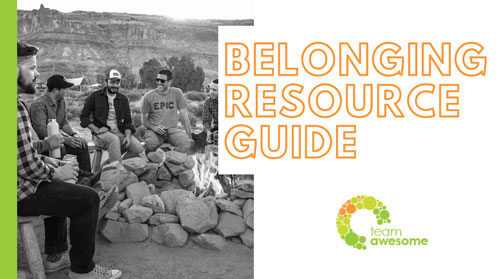Parents are tired. We are showing signs of burnout. It’s already happening, and it might just be getting even harder for a large percentage of working parents out there.
Businesses are beginning to open up from state-by-state shutdowns as a result of the pandemic. Slowly, more and more people are trickling back to work, or back into an office setting. But you know whose scene hasn’t changed? Our kids.
Businesses are opening up and remote workers are finding their rhythm. As a result, this pulls the average salaried worker at your company back closer towards an old routine, a faster pace. This is juxtaposed next to child care or schooling resources that have not budged. A huge dissonance is brewing.
As long as childcare centers, schools and summer camps are closed, employees with children will begin to feel left behind. We are already at home, struggling to balance work calls (SO MANY Zoom calls!) with the needs of our children. We are worried we are failing our kids. Our jobs. Ourselves. Everyone. Women are disproportionately affected by the lack of child care, and the current situation is already causing erosion in the progress towards gender equality in the work place.
As the pace picks back up at work, we feel we need to perform to keep up (or even keep our jobs). When everything was closed, the playing field wasn’t level with our non-parent co-workers, but now the field seems to be getting even wider. We feel like we are falling behind, and not really succeeding at any of our jobs, work or home. Then add on some of the additional mental load, decision fatigue and anxiety from answering questions for ourselves about how we proceed with our lives. Do we expand our bubble? Is it safe to visit grandparents? Are we feeding them too much mac and cheese? It’s understandable parents are running out of steam, anyone would be given the circumstances.
For leaders and organizations, this is a critical time when we could be taking action to support parents and caregivers with extended support while our children are at home. The effects of the pandemic are not going away any time soon, and parents and employers alike should be prepared for intermittent stay-home orders or remote work and schooling for the foreseeable future. And forgive us if we hesitate to send our children back to their germ-spreading pods in the fall.
If we create support structures now, we can give parents a fraction of what they need to stay sane and employed.
Ways Organizations Can Support Parents
- Encourage a moratorium on meetings during select critical parenting hours, like 11:30 a.m. – 1:00 p.m., for example. (I would be feeding my children, feeding myself, resetting my kids for the afternoon and putting a toddler down for nap during this time)
- Provide financial support for helpful subscriptions (such as online learning tools or virtual summer camps)
- Offer temporary reduced schedules, with no or little pay reduction (through periods of children at home)
- Support temporary leaves of absence until childcare is open
- Include parents, especially women, in a candid discussion for how to best support parents – they will tell you what they need
- Allow flexibility with schedules where parents can plan block schedules for deeper work or calls or fit in emails elsewhere
- Let people work from home – for the rest of the year or longer
- Provide support and openly talk about it – let parents know you see them, and you have their back
- Give guidance to non-parents on to support co-workers who are – if there are no meetings at lunchtime, communicate that so parents don’t have to maintain all of the burden to educate others and enforce it
- Remove difficult decisions from parents’ plates by giving them the right thing up front
Steps Working Parents Can Take
For the working parents reading this… I see you. I love you. This has been unimaginable in so many ways. The time is now for you to take action on all of the things that you can control so that you may feel at the cause, not the effect, of the situation.
Set boundaries, and communicate them. Boundaries are simply deciding what you will and will not do, and telling others about them. Decide, and make sure other stakeholders (e.g., peers, team, boss, or at-home partner) are clear on what those are so they can best align with them.
Give yourself grace. We are simply the worst at this. Try a little each day to build the muscle.
Break big decisions into smaller chunks. Get clear about how you feel and what you want in order to inform decision making.
You do you. There is no clear or definitive guide on what you should do for yourself and your family. I am sorry these difficult decisions are entirely left up to you to hash out. But you do what YOU need to do. Have you ever heard the idea about your life being made up of five balls that you are juggling? If you drop a rubber ball (work), it bounces back. But if you drop a glass ball (health, family), well…
The actions our leaders and organizations take during this strange and extraordinary time will be remembered for years to come. The ways organizations show that they have the backs of the humans that work for them (or don’t) are coming into acute focus right now. What will we see when yours come to light? Parents will remember what it felt like to be seen and feel a little relief.
Oh, and moms… dads. You’re doing a great job.
About the author:
Katie Rasoul is a keynote speaker, author, coach and Chief Awesome Officer for Team Awesome, a leadership coaching and culture consulting firm. She is a TEDx speaker alumna, author of the best-selling book, Hidden Brilliance: A High-Achieving Introvert’s Guide to Self-Discovery, Leadership and Playing Big, and co-host of The Life and Leadership Podcast.
To learn more about Katie’s signature keynote talk, “Beyond Diversity & Inclusion to Belonging,” visit www.katierasoul.com.



Recent Comments